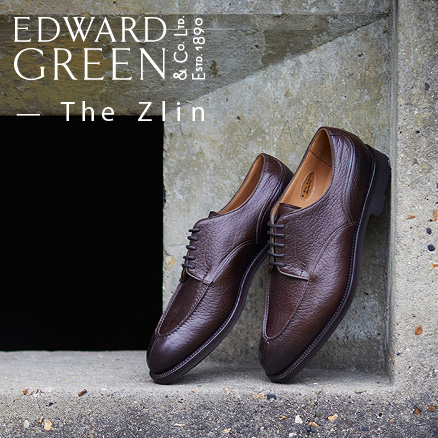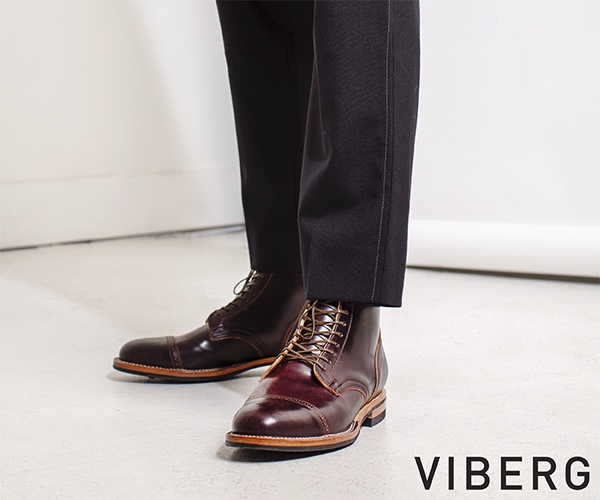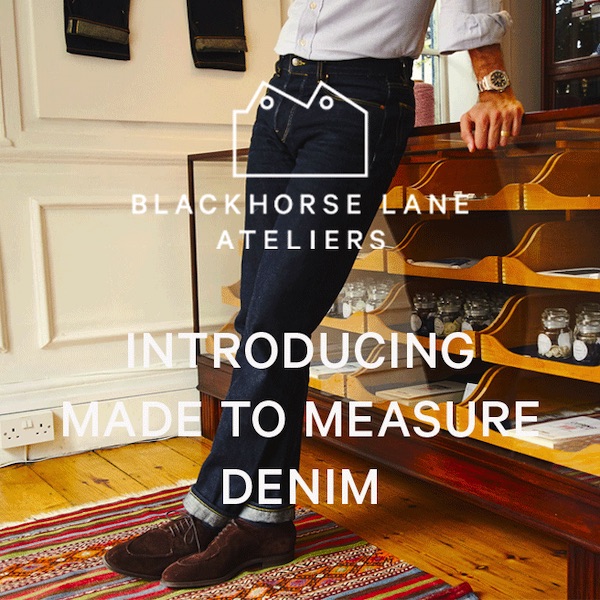An Introduction to Thai Silk
- Cloth
Simon is away on holiday this week, so you have a whole wonderful week of Manish to look forward to.
By Manish Puri.
On my recent trip to Thailand in celebration of my girlfriend’s birthday, in between attending three menswear dinners, documenting all of my outfits, and getting bitten by a snake, we actually managed to find time to do a couple of things that she wanted to do. I know, it’s give give give with me.
Top of the list in Bangkok were visits to two separate but complementary tourist attractions: the Jim Thompson House and the Queen Sirikit Museum of Textiles (located within the grounds of the Grand Palace).
These museums gave me a better understanding of sericulture (the name for the cultivation of silkworms and the extraction of silk), a greater appreciation of the beauty of Thai silk, and an insight into the story behind its resurgence in popularity in the second half of the 20th century – to the extent that I picked up a couple of lengths myself.

Legend has it that silk was first discovered in the 27th century BC by the Empress Leizu; as she enjoyed some tea under the shade of a mulberry tree, a cocoon fell into her cup and the warmth of the liquid caused silk to spool out of it.
Archaeological evidence in Baan Chiang dates silk in Thailand back over 3,000 years. Although how production began in the country remains unclear. Was it developed independently or imported? The Maritime Silk Road connected China and India via ports in several Asian countries, including what we now call Thailand, and many historians believe this is the most likely genesis.
The video above (commissioned by the Museum of Textiles) gives an excellent overview of how Thai silk is made, and a few things become immediately apparent, chief among them the predominance of women in production and how laborious the process is. And remember, a simple necktie requires around 100-150 cocoons of silk, to create tailoring would need thousands.
The entire process is still largely hand powered – which is one of the things that gives Thai silk its reputation for quality. Of course, as Simon learned on his OMTC visit, this also means that it’s slow, expensive and hard to resource – requiring years of experience to get right.
So, while Thailand is a major global producer of silk (depending on your source, their output ranks somewhere between fourth and seventh), they are still dwarfed by China, which makes around three-quarters of the world’s silk.

There are a few different types of silk made in Thailand. One of the most extensively produced is dupioni (above), whose yarn comes from dupion cocoons, which are formed when two silkworms spin their cocoons close together resulting in a slubbier yarn.
Thai silk usually comes from yellow cocoons, which tend to have more surface texture than the white cocoons used in China – the difference in colour is a result of the silkworm’s hemolymph (blood). That extra texture makes Thai silk particularly well suited to producing dupioni cloth.

The most expensive silk is brocade (above), a type of weave where an additional weft yarn is woven into the cloth for ornamental purposes.
The result is a richly decorative silk that requires considerable patience and expertise. A master weaver often works alongside a few assistants, whose sole responsibility is to monitor and count the threads of the pattern being woven. A sarong length can take a month to complete.
For these reasons, brocade is often reserved for the very finest garments, and is heavily featured in the dress of the Royal family.

One of the most coveted silks is mat mii (also known as ikat – above), which is mainly woven in the north-eastern region of Isan. Mat mii is a resist dyeing technique used before weaving.
Prior to being dyed, the weft yarn is gathered together, parts of it are wrapped in banana leaf (which help the yarn ‘resist’ the dye) and parts are left exposed (to absorb the dye). You can see this on the loose threads of my cloth (below); a mix of green and orange create the pattern.
This process might be repeated several times, using different coloured dyes and with different areas of the yarn covered. The dyed weft is then woven with the warp to produce silk cloth of strikingly intricate patterns.
I bought the length I bought in Bangkok. I’ve considered making a tie out of it, but it almost seems a shame to cut the silk and discard parts of it, so it may remain intact as a wall hanging.

Even after all these centuries, I’m genuinely astonished by the stages of cultivation, extraction, spinning, dyeing and weaving required to make a single length of plain cloth.
The idea that someone would then say, “we can make this better”, and proceed to part-dye one of the yarns, without being able to visualise what the end result would look like, is crazy. And then find a way of recording what produced a pleasing pattern, so it could be replicated.
It’s a remarkable testament to the patience, innovation and stubbornness of humans in the pursuit of something beautiful.

And yet, as we PS readers know all too well, craft and beauty are neither given favour nor granted immunity against the often subtle, sometimes seismic shifts in the sociopolitical landscape. By the 1940s, the very notion of what being Thai meant was changing – the result of a series of cultural mandates issued by the government of Field Marshal Plaek Pibulsonggram.
These mandates were an instrument used to modernise Thai culture. The edict on clothing instructed that “appropriate dress for Thai people consists of […] polite international-style attire”. The picture above shows inappropriate dress on the left and appropriate dress on the right.
This shift in national dress, which rejected traditional wrapped clothing, along with the proliferation of industrial textile production and synthetic fibres, meant that by the late 40s the Thai silk industry was in terminal decline.
It took two pivotal figures to resurrect it – an American spy and a Thai monarch (below).


James Thompson (above) was born in Delaware in 1906. His maternal grandfather, a General in the American Civil War, travelled across China building a railway, and his father was a wealthy textile merchant. With hindsight, the lives and experiences of these men seem destined to define young Jim.
After a stint as an architect, Jim ended up working for the Office of Strategic Services (the predecessor to the CIA) and for his final assignment in 1945, was set to parachute into northern Thailand to support the Free Thai movement, when the Japanese surrender was announced on the radio.
The war was over, but Thompson elected to stay in Bangkok, where his love for Thai culture and craft was kindled.

In the late 1940s, Thompson (above right) began to sell bolts of silk in the lobby of the Oriental hotel – the first hotel built in Thailand, and one which he part-owned for a short time. In 1951, the Thai Silk Company was incorporated.
Early in the company’s history, Jim made the acquaintance of Edna Wollman Chase, the editor-in-chief of Vogue magazine. Struck by the rich colours and the quality of the silk, Edna is said to have hailed it as a “magnificent new discovery”, and introduced Thompson to prominent designer friends.
Around the same time, Thompson was contacted by Academy Award-winning costume designer Irene Sharaff, who was in preparation for the opening of a new Broadway musical, written by Rodgers and Hammerstein and set in old Siam (the official name for Thailand until 1939); the show was The King and I, and the Thai Silk Company provided silks for the costumes, and did so again when the Hollywood version was filmed in 1956.


Features in Vogue and the box office success of the musical helped bring international recognition to the Thai Silk Company, which by 1957 was reporting sales of $650,000 per year. While it made Jim a rich man, the majority of the equity was held by Thai investors or distributed to the weavers – some of whom became millionaires themselves.
The growth of the business afforded Thompson the opportunity to design one last home in 1958: his own. That house is now a museum where visitors can learn more about Jim Thompson’s role in the silk industry, and see the beautifully appointed rooms (below). I would recommend it to any PS readers who visit Bangkok.


While Jim Thompson was building his business, King Bhumibol (above centre) had just commenced his seven decade reign of Thailand and married Sirikit Kitiyakara (above left).
The new Queen was a great champion of Thai silk, and would frequently wear garments made out of it. She even favoured mat mii (ikat) silk, which at that time was considered to be a fabric for poorer, rural women.
In 1960, the Royal couple embarked on an historic six-month tour of 15 western nations. The trip cemented Queen Sirikit’s status as a style icon with Time magazine describing her as “enchantingly elegant”.

The Queen’s meticulously planned wardrobe – over 150 pieces packed into custom-made Louis Vuitton trunks – delighted observers with the way it mixed western and Thai style, and brought further recognition to the beauty of Thai silk.
Many of these garments were made for her by Parisian couturier Pierre Balmain – the start of a fashion partnership that endured for over two decades.
Today the Queen Sirikit Museum of Textiles houses a wonderful collection of the various daywear, cocktail dresses and evening gowns she wore on that trip.

In 1976, the Queen established the Royal SUPPORT foundation with a dual aim of preserving traditional textile arts and crafts, and helping poorer communities (principally farmers whose income could be decimated by natural disasters) develop a supplementary income.
Similarly, in 1975, the James HW Thompson Foundation was founded to support “the conservation and dissemination of Thailand’s rich cultural heritage”.
And today, Jim Thompson’s now-eponymous luxury brand is a fully integrated silk manufacturing company, controlling each aspect of the process in the production of silk furnishings and clothes – the latter can be seen on the third season of The White Lotus (above).

As for the man himself, his story came to a mysterious end. In 1967, while holidaying with friends in the Cameron Highlands of Malaysia, Thompson went for a walk and never returned.
As one of the most famous westerners in Asia at the time, his disappearance attracted global attention and sparked one of the largest ever manhunts in the region. Alongside the police, aboriginal tribesmen, clairvoyants, witch doctors and a psychic detective all offered to lend a hand.
As the search for evidence dwindled, a variety of increasingly wild theories proliferated. Tigers, money troubles (one biographer reports lavish spending on his art collection left Thompson with $50 to his name), and political abduction of the hitherto presumed former spy were all blamed – without any credible backing.
In 1974, after a statutory period of seven years, Thai courts declared Jim Thompson dead in absentia. By then, his legacy inextricably woven into the fabric of Thailand’s textile history.
Manish is @the_daily_mirror on Instagram
For a comprehensive treatment of Thai sericulture, I’d highly recommend this website which has a series of detailed pieces, including ones on where to buy Thai silk from.
The images of Queen Sirikit are copyright of the Queen Sirikit Museum of Textiles.
Related posts
- A guide to pure-silk tailoring
March 24th 2025 – 70 CommentsRead More
- The A-Z of cloth
November 11th 2016 – 62 CommentsRead More
- The Button Queen
July 28th 2014 – 21 CommentsRead More
Subscribe to this post
–>

























